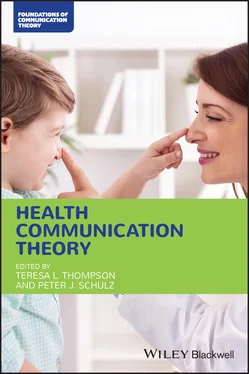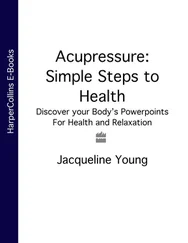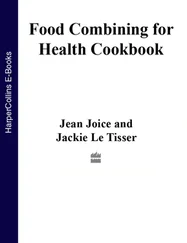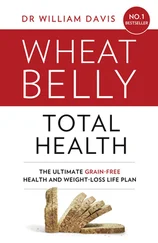Carefully disseminating promotional messages to the priority audience can be improved by considering the role of the individual difference variables. For decades, social marketing professionals have recognized the value of targeting specific audience segments in the greatest need of a behavioral change (Lee 2016; Lee and Kotler 2020). The impetus behind the current chapter is not to do away with or discourage tailoring messages to a specific audience segment based on demographic, geographic, psychographic, and behavioral variables. Rather, we are advocating for a handful of individual difference variables to be considered as additional audience segmentation variables, with a history of moderating how an audience processes promotional messages. Specifically, future health campaigns should consider segmenting priority audiences along the dimensions of involvement (Petty and Cacioppo 1979), health literacy (Aldoory 2017), locus of control (Rotter 1966), reactance proneness (Hong and Faedda 1996), self‐monitoring (Briñol and Petty 2015; Snyder 1979), and sensation seeking (Zuckerman 1979). Inclusion of these factors will likely shed light into a more nuanced understanding of the priority audiences’ perceived barriers, benefits, and competition as each relate to the desired behavior (Andreasen 1995). With a greater understanding of these factors, social marketers and health campaign professionals’ ability to design, implement, and evaluate campaigns will only improve (Finnell and John 2017).
1 Aldoory, L. (2017). The status of health literacy research in health communication and opportunities for future scholarship. Health Communication, 32, 211–218. doi:10.1080/10410236.2015.1114065
2 Allport, G. W. (1943). The ego in contemporary psychology. Psychological Review, 50, 451– 478. doi:10.1037/h0055375
3 Ancker, J. S., Grossman, L. V., & Benda, N. C. (2019). Health literacy 2030: Is it time to redefine the term?” Journal of General Internal Medicine. doi:10.1007/s11606‐019‐05472‐y
4 Andreasen, A. R. (1995). Marketing social change: Changing behavior to promote health, social development, and the environment. San Francisco, CA: Jossey‐Bass.
5 Armitage, C. J. (2003). The relationship between multidimensional health locus of control and perceived behavioural control: How are distal perceptions of control related to proximal perceptions of control? Psychology & Health, 18(6), 723–738. doi:10.1080/0887044031000141216
6 Atkin, C. K., & Salmon, C. (2013). Persuasive strategies in health campaigns. In J. P. Dillard & L. Shen (Eds.), The Sage handbook of persuasion: Developments in theory and practice (pp. 278–295). Thousand Oaks, CA: Sage.
7 Bardo, M., Donohew, L., & Harrington, N. G. (1996). Psychobiology of novelty‐seeking and drugseeking behaviour. Brain and Behaviour, 77, 23–43. doi:10.1016/0166‐4328(95)00203‐0
8 Berkman, N. D., Davis, T. C., & McCormack, L. (2010). Health literacy: What is it? Journal of Health Communication, 15(supp. 2), 9–19.
9 Berkman, N. D., Sheridan, S. L., Donahue, K. E., Halpern, D. J., Viera, A., Crotty, K., … Viswanathan. M. (2011). Health literacy interventions and outcomes: An updated systematic review. Evidence Report/Technology Assessment, No. 99. Rockville, MD: Agency for Healthcare Research and Quality.
10 Booth‐Butterfield, M., Anderson, R. H., & Booth‐Butterfield, S. (2000). Adolescents’ use of tobacco, health locus of control, and self‐monitoring. Health Communication, 12, 137–148.
11 Brehm, J. W. (1966). A theory of psychological reactance. New York, NY: Academic Press.
12 Brehm, J. W., & Brehm, S. S. (1981). Psychological reactance: A theory of freedom and control. San Diego, CA: Academic Press.
13 Briggs, S. R., Cheek, J. M., & Buss, A. H. (1980). An analysis of The Self‐Monitoring Scale. Journal of Personality and Social Psychology, 38, 679–686. doi:10.1037/0022‐3514.38.4.679
14 Briñol, P., & Petty, R. E. (2015). Elaboration and validation processes: Implications for media attitude change. Media Psychology, 18, 267–291. doi:10.1080/15213269.2015.1008103
15 Carpenter, C., Boster, F. J., & Andrews, K. R. (2013). Reactance theory and persuasion. In J. P. Dillard & L. Shen (Eds.), The Sage handbook of persuasion: Developments in theory and practice (pp. 104–119). Thousand Oaks, CA: Sage.
16 Chaiken, S. (1980). Heuristic versus systematic information processing and the use of source versus message cues in persuasion. Journal of Personality and Social Psychology, 39, 752–756. doi:10.1037/0022‐3514.39.5.752
17 Chartrand, T. L., Dalton, A. N., & Fitzsimons, G. J. (2007). Nonconscious relationship reactance: When significant others prime opposing goals. Journal of Experimental Social Psychology, 43, 719–726. doi:10.1016/j.jesp.2006.08.003
18 Chen, B.B. (2019). Academic procrastination and bedtime among Chinese undergraduates: The indirect and moderating effects of sensation seeking and goal disengagement. Current Psychology, 38, 187–193. doi:10.1007/s12144‐017‐9605‐9
19 Cho, H., & Boster, F. J. (2005). Development and validation of value‐, outcome‐, and impression‐relevant involvement scales. Communication Research, 32, 235–264. doi:10.1177/0093650204273764
20 DeBono, K. G. (2006a). Attitude functions and consumer psychology: Understanding perceptions of product quality. In G. R. Maio & J. M. Olson (Eds.), Why we evaluate: Functions of attitudes (pp. 195–221). Mahwah, NJ: Erlbaum.
21 DeBono, K. G. (2006b). Self‐monitoring and consumer psychology. Journal of Personality, 74, 715–738. doi:10.1111/j.1467‐6494.2006.00390.x
22 DeBono, K. G., & Packer, M. (1991). The effects of advertising appeal on perceptions of product quality. Personality and Social Psychology Bulletin, 17, 194–200. doi:10.1177/014616729101700212
23 De las Cuevas, C., Peñate, W., Betancort, M., & de Rivera, L. (2014). Psychological reactance in psychiatric patients: Examining the dimensionality and correlates of the Hong Psychological Reactance Scale in a large clinical sample. Personality and Individual Differences, 70, 85–91. doi:10.1016/j.paid.2014.06.027
24 Dillard, J. P., & Shen, L. (2005). On the nature of reactance and its role in persuasive health communication. Communication Monographs, 72, 144–168. doi:10.1080/03637750500111815
25 Donohew, L. (1990). Public health campaigns: Individual message strategy. In E. B. Ray & L. Donohew (Eds.), Communication and health (pp. 136–152). Hillsdale, NJ: Erlbaum.
26 Donohew, L., Lorch, E. P., & Palmgreen, P. (1991). Sensation seeking and targeting of televised antidrug PSAs. In L. Donohew, H. E. Sypher, & W. J. Bukoski (Eds.), Persuasive communication and drug abuse prevention (pp. 209–226). Hillsdale, NJ: Erlbaum.
27 Donohew, L., Lorch, E. P., & Palmgreen, P. (1998). Applications of a theoretic model of information exposure to health interventions. Human Communication Research, 24, 454–468. doi:10.1111/j.1468‐2958.1998.tb00425.x
28 Donohew, L., Palmgreen, P., & Duncan, J. (1980). An activation model of information exposure. Communication Monographs, 47, 295–303. doi:10.1080/03637758009376038
29 Donohew, L., Zimmerman, R., Cupp, P. S., Novak, S., Colon, S., & Abell, R. (2000). Sensation seeking, impulsive decision‐making, and risky sex: Implications for risk‐taking and design of interventions. Personality and Individual Differences, 28, 1079–1091. doi:10.1016/S0191‐8869(99)00158‐0
30 Donovan‐Kicken, E., Mackert, M., Guinn, T., Tollison, A., Breckinridge, B., & Pont, S. (2012). Health literacy, self‐efficacy, and patients’ assessment of medical disclosure and consent documentation. Health Communication, 27, 581–590.
31 Dowd, E. T., Milne, C. R., & Wise, S. L. (1991). The Therapeutic Reactance Scale: A measure of psychological reactance. Journal of Counseling & Development, 69, 541–545. doi:10.1002/j.1556‐6676.1991.tb02638.x
Читать дальше












